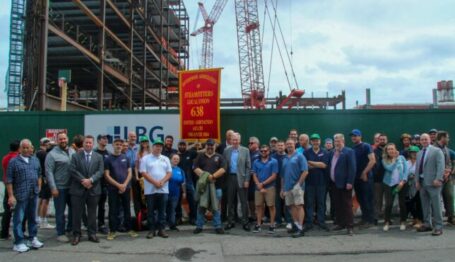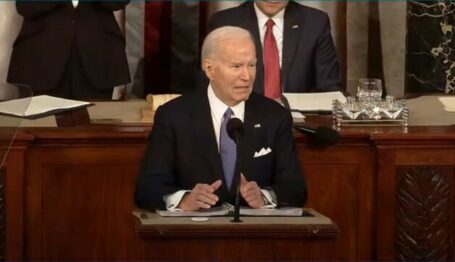Labor Watch
Lessons from Hollywood’s Labor Strife
 AFTRA and WGA striking members walk a picket line in front of Paramount Pictures in Hollywood in July 2023. Credit: Elliott Cowand Jr. License: Shutterstock.
AFTRA and WGA striking members walk a picket line in front of Paramount Pictures in Hollywood in July 2023. Credit: Elliott Cowand Jr. License: Shutterstock.

In September, the Writers Guild of America-West (WGA) ended its strike against the Hollywood studios; in early November, the actors’ union SAG-AFTRA reached its deal with the studios. With the strikes concluded and agreements reached, Hollywood can resume making left-wing ideological dreck that loses money hand over fist that only serves to undermine the classic stories on which it was built.
But while Hollywood resuming its work may be a disappointment, can we derive lessons for labor policy from the studio shutdown? Expect labor unionists and their Big Philanthropy–funded allies to claim that the relatively favorable deals that the unions obtained—and that the United Auto Workers obtained from the Big Three automakers—prove that everyone should be forced to accept union representation, even if that is not in their economic or political interests.
But Hollywood strike reveals at least two facts that should caution: First, there are innocent casualties in other people’s labor disputes, and second, Big Labor victories do not even paper over structural failures in industries, with workers’ jobs often being casualties to those failures.
Collateral Damage
In the introduction, I joked about my disappointment that Hollywood would be restarting production. But for thousands of people in Southern California, that new production will restart lives that have been on hold because of other people’s arguments.
For production crew, stylists, caterers, prop vendors, and many others, the shutdown enforced by the WGA, SAG-AFTRA, and the studios’ disputes cost them months of wages and revenue. Including the self-inflicted injuries the strikes imposed on the disputants, total economic damages from the shutdowns are estimated to have exceeded $6 billion.
A certain amount of labor strife is probably inevitable in an industrial economy. It has certainly always existed for as long as the economy has been industrialized. What the fallout from Hollywood teaches is the wisdom of setting rules containing the damage from other people’s labor disputes. The Taft-Hartley Act restricted the valid targets of industrial action precisely to limit the damage to uninvolved parties from labor disputes.
Given their way, Big Labor would throw out these limits. Restoring “secondary boycotts,” which one might call “the left’s ultimate weapon” in other circumstances, is part of the Biden administration-endorsed PRO Act. Labor union activists—who often see themselves as a radical-left vanguard, just look at the demands of groups like Starbucks Workers United and the Amazon Labor Union for Israel not to respond to the terrorist massacres of October 7—would go further, channeling the “general strikes” of Europe and Latin America to gain left-wing social and economic goals.
Point of No “RETVRN”
On both the political right and left, there is a desire to restore the social and political-economic conditions of the 1950s. Left-wingers miss the national collectivism and state direction of an economy that had almost 10 percent of GDP directed to national defense. Right-wingers miss the social cohesion and national identity they credit to a strong fatherly government and restricted immigration. Consciously or unconsciously, these factions seek “RETVRN”: an internet meme for “Return [to a golden age]” (with the “u” in “return” made into a “V” like on a Roman inscription).
Factions of the Right join the Left in praising the power of the midcentury trade union movement, as both factions ignore how that midcentury movement was compromised by Communists and Mafiosi. Commentators like Sohrab Ahmari credit Big Labor’s pacts with Big Government and Big Business with establishing the years of prosperity and growth following the Second World War. The policy logic is that “if only Big Labor could be strengthened, we could RETVRN.”
But what the French call “Les Trente Glorieuses” were always going to end, no matter what changes came to labor-relations policy. (See, er, France, which adopted and has retained the Big Labor/American Compass policies of sectoral bargaining, works councils, and a politically powerful trade union movement.) The historical moment immediately following WWII included a world in which major economies either had been destroyed by war or were self-destructing into Communism (or other forms of state socialism, like India’s License Raj).
Strong unions and collective agreements could not hold back the economic tide. And industry analysts don’t think the strong SAG-AFTRA and WGA-West agreements will hold back the economic tide aimed at Hollywood, either. As interest rates rise, the studios and production companies cannot take as many bets on risky projects, whether they be ideological pet projects, art-style innovations, or simple bloatware to fill the libraries of multiplying streaming services.
For the union members who woke up giddy at the terms of the deals their unions just made, there may be less gold at the end of the rainbow than they hope. The New York Times reports:
There is uncertainty over what a poststrike Hollywood will look like. But one thing is certain: There will be fewer jobs for actors and writers in the coming years, undercutting the wins that unions achieved at the bargaining table.
Even before the strikes, entertainment companies were cutting back on the number of television shows they ordered, a result of severe pressure from Wall Street to turn money-losing streaming services into profitable businesses. Analysts expect companies to make up for the pair of pricey new labor contracts by reducing costs elsewhere, including by making fewer shows and canceling first-look deals.
WGA and SAG-AFTRA’s deals might be great on paper, but how many union members (and the unseen losing parties to any labor union agreement, namely people who will never be hired into an industry due to the union’s cartel) will miss out on the gains? In the battle between economic reality and labor union cartel power, economic reality will always win.



